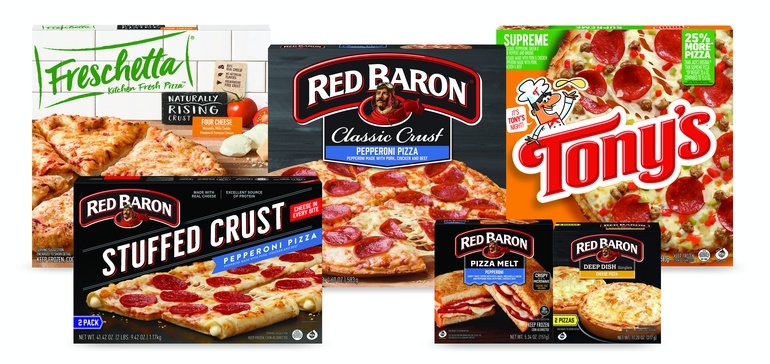Red Baron pizza maker aims for a bigger slice of the market

With 98% of Americans already eating pizza, the popularity of the food staple might lead some to conclude the market is saturated and growth will be hard to obtain. But for Brian Schiegg, president of consumer brands at Schwan’s, the mature frozen pizza category remains especially ripe for growth as consumers flock to more premium ingredients, single-serve offerings and new innovation.
“We see growth coming from all” parts of the frozen pizza category, said Schiegg, whose company’s brands include Red Baron, Freschetta and Tony’s. “Now is the time to really capitalize on that, between offering consumers choice and the right innovation level.”
Ever since consumers were able to buy the first frozen pizzas in the 1950s, the category has exploded into hundreds of brands, taste profiles, formats and price points.

Brian Schiegg
Permission granted by Schwan’s
Frozen pizza sales in the U.S. for the 52 weeks ending March 21 were about $6 billion, according to Statista data, compared to $4.4 billion during the same period five years earlier. Sales rose 6% this past February from the same month a year earlier as consumers spent more time at home, Schwan’s noted, citing information from IRI.
Today, the frozen pizza category is dominated by Nestlé, whose brands include top-selling DiGiorno, Tombstone and Jack’s, giving the world’s largest food maker close to 40% market share, IRI data showed. Schwan’s is second at 21%, followed by private label at 12%.
With nearly every person consuming pizza at least a few times a year, Schiegg said Schwan’s is focusing on increasing consumption rates by giving shoppers more reasons and opportunities to eat it. He declined to share numbers on sales for Schwan’s frozen pizzas but said the company experienced “significant growth in 2020 and is seeing that momentum continue” into this year.
Global sales for frozen pizza were more than $16 billion in 2020, according to Statista. The category appears poised for meaningful growth in the future with the firm predicting revenue to top $23 billion in 2027.
Part of tapping into this growth for Schwan’s and others is giving consumers more options, whether they want to indulge or bite into a product that is better for you with fewer calories or fresher ingredients.
“It’s a balance between all that and making sure we continue to offer consumers choice,” Schiegg said. “The pizza category is well posited to meet the needs of many consumers, which are going to be different.”
Premiumization has infiltrated nearly all aspects of food and beverages, and pizza is no exception. Frozen pizza makers have not only turned to new topping mixes, but also alternative options like stuffed crusts for the indulgent crowd along with cauliflower crusts and gluten-free lines. In 2020, Schwan’s rolled out a Red Baron stuffed crust pizza and a thin crust Freschetta line.

Optional Caption
Courtesy of Schwan’s
Schiegg said for now, Schwan’s is prioritizing innovation of its core brands, but it could eventually decide to introduce an entirely new product to capitalize on growth in the premium space.
Multiple serving pizza remains the most popular option, but single serve is among the most promising growth categories. An estimated 17% of pizza buyers are exclusive to single-serve options, Schwan’s said. But with consumers juggling more day-to-day responsibilities, whether on the go or from the comfort of their own homes, these trends only serve to build momentum for future expansion.
With the trend toward single-serve and the ongoing benefits of hand-held for those on the go, Red Baron debuted Pizza Melts last October — a sandwich-like offering with cheese, sauce, pepperoni and other toppings placed between two slices of toast.
An estimated 3 billion pizzas are sold each year in the United States alone, with each person consuming 46 slices annually, according to Packaged Facts.
Another potentially lucrative option for Schwan’s could come from personalization. Here, an individual can customize frozen pizza they order online much like when they call the local pizza shop.
“It’s certainly a trend that we’ve seen in different categories, and something we would always consider looking at as well,” Schiegg said.
Source: fooddive.com

